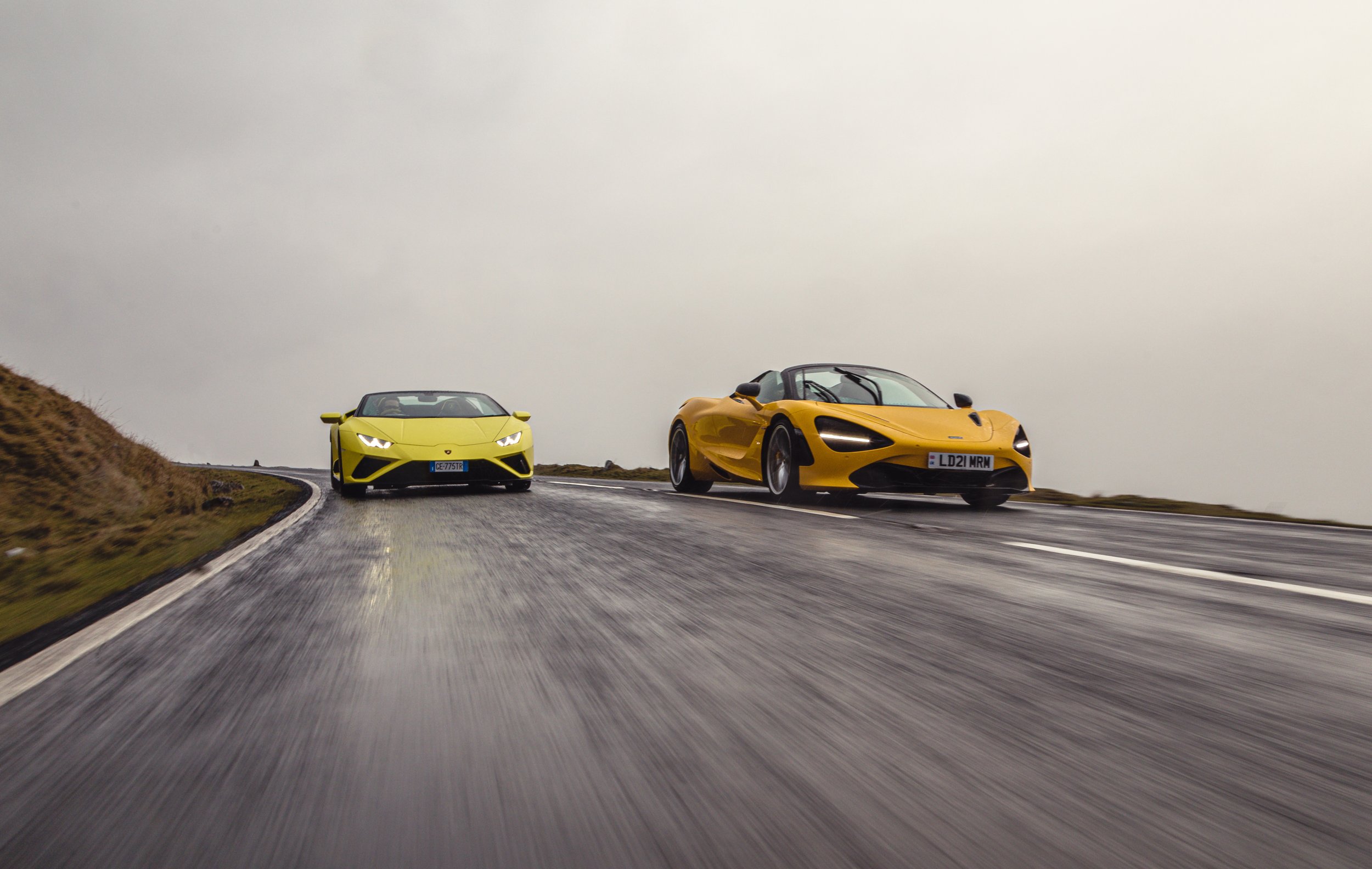
Twin Test: Lamborghini Huracán Evo RWD Spyder vs McLaren 720S Spider
Convertible supercars aren’t really made for bad weather, but that didn’t stop Mark and Sid North taking two of them to the Black Mountain Pass in Wales for some winter fun.
WORDS: Mark Rose | PHOTOS: Dom Ginn
My senses are being assaulted, not by the miserable weather or the McLaren 720S Spider I’m driving, but by the sight and sound of the highlighter-yellow Lamborghini Huracán ahead of me. We roll out of the Welsh village of Brynamman on the south side of the Black Mountains, and begin our ascent up the A4069. I watch on as the Lambo’s canvass roof folds away and not to be outdone, I decide to follow suit despite the incessant drizzle and stiff breeze. At full chat, the twin-turbo 4.0-litre V8 engine in the 720S sounds properly angry, but all I can hear is the Huracán’s naturally aspirated 5.2-litre V10 motor screaming away out front. It blots out the eight cylinders just behind my head and bounces off the mountainous terrain around us. If my co-driver Sid is orchestrating the concert, then I’m sat on the front row listening to the symphony. A moment later, the soundtrack skips a note and I look on helplessly as the rear end of the Huracán RWD steps out of line. This particular Lamborghini is prone to snap oversteer because as the name suggests, we’re in the company of the rear-wheel-drive model, and at this altitude, it’s a long way down. Sid saves the car, along with his life, and as if nothing ever happened, opens the throttle and sends it up the mountain pass in a world of noise, colour and fury. This, is living.
Bringing two highly strung supercars to this part of the UK for the purpose of road testing may sound a little cliché, but the combination of roads and weather create a challenge that few other places can replicate, and we wasted no time getting stuck in to the task at hand. Despite its bravado, I felt a little sorry for the Lamborghini Huracán Evo RWD Spyder, because holding a candle to a McLaren 720S is an unenviable task. They may both be mid-engine supercars capable of alfresco motoring, but in their execution, they couldn’t be more different. Where the Mac uses a carbon tub, hydraulically linked suspension, and electro-hydraulic steering, the Lambo makes do with a hybrid carbon-aluminium chassis, passive dampers, and electric power steering. Technically speaking, the McLaren is superior and in a game of Top Trumps, it wins out in nearly every metric. But what is better on paper doesn’t necessarily mean more entertaining on the road, and we know how exciting these rear driven Huracáns can be.
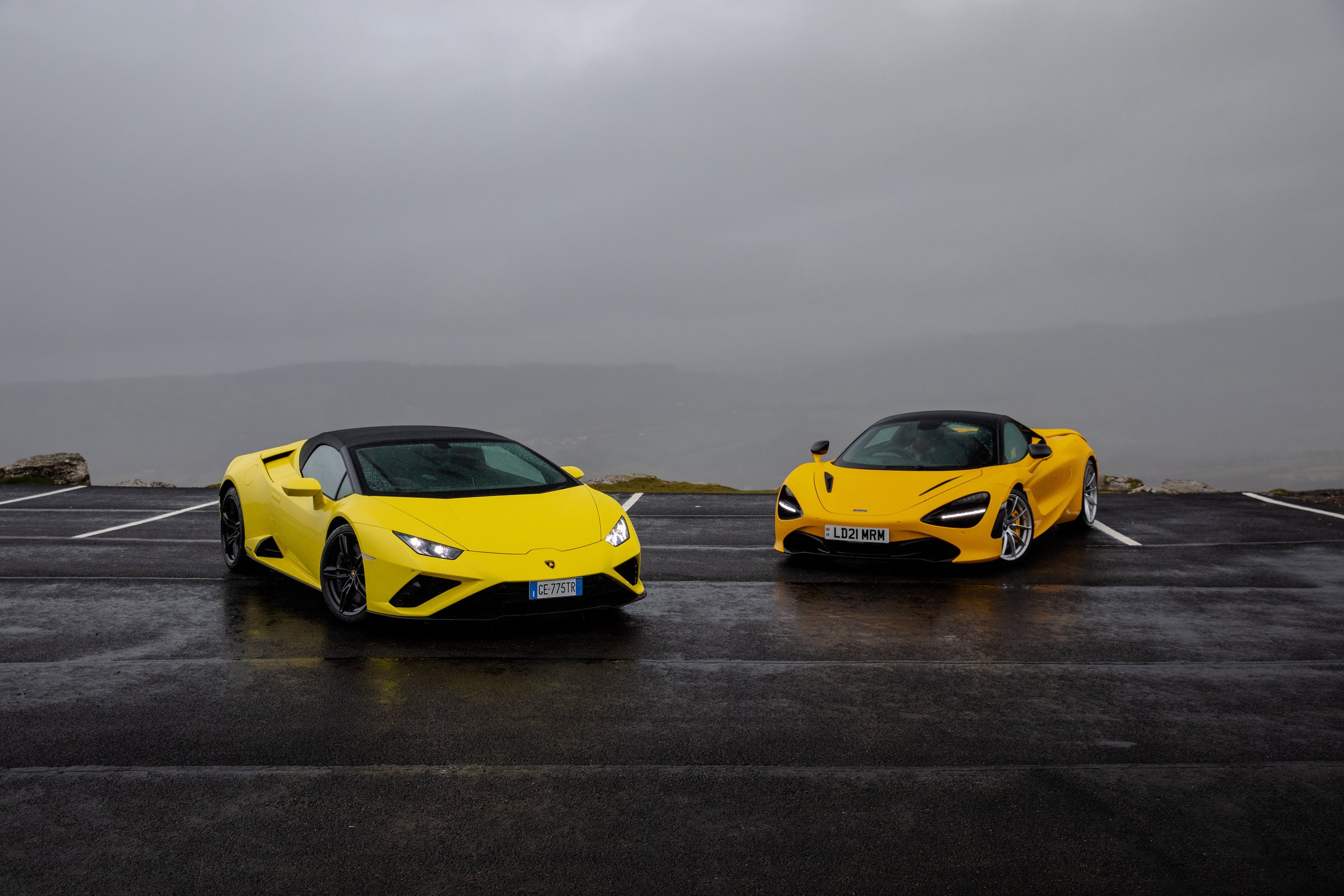
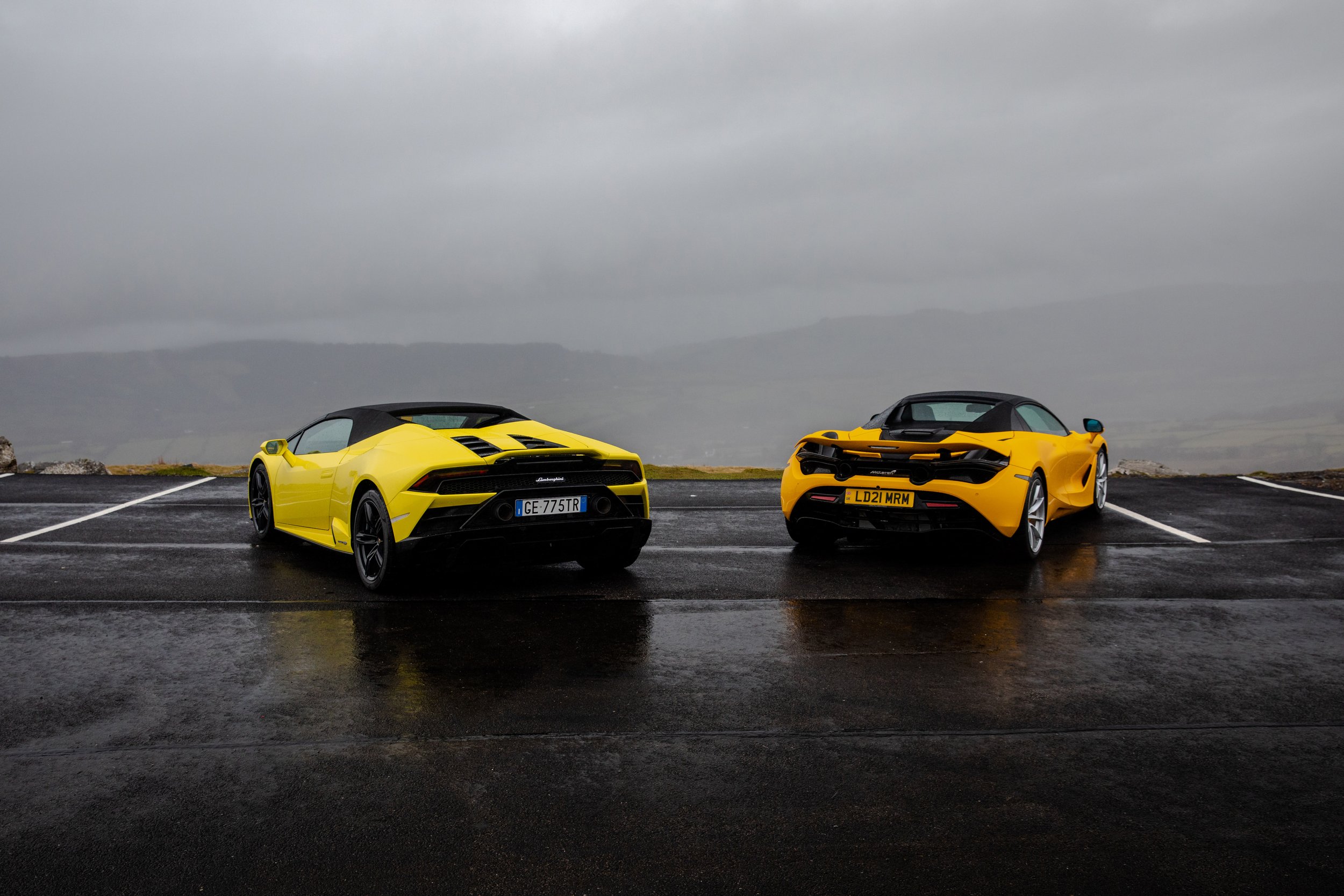
On the Black Mountain Pass, the Lambo isn’t just scary, it’s terrifying. The high scuttle, low roof line and letter box rear window make it near impossible to see out of. To make matters worse, it’s large and unruly. The wide track, lack of steering feel and snappy rear end mean you’re constantly unaware of where the front wheels are and what the rears might do next. In these sodden conditions where the stakes are high, you’re living off your senses. One wrong move and you’re tumbling off the cliff’s edge. But somehow, it makes the Huracán all the more life affirming. The RWD has more than a hint of old school Lambo about it. If you took away the 21st century mod-cons and some of the modern rolling refinement, you’d be left with a supercar from a more unforgiving era. When you overstep the mark it punishes you, but it also thrills you in a way that very few new cars can. It’s pure theatre.
The McLaren is to the Lamborghini what prescription meds are to illicit drugs. You still need to handle with caution, but it won’t leave you face down in a gutter after a night out on the town. In the 720S, you can ride the wave of torque without spinning up the rear wheels. If you let the turbos spool in the wet, the rear tyres will scupper for grip, but the traction control steps in before things get too wayward making the 720S a far more trusting car in these conditions. Above all though, you can actually see and feel what’s going on. This has always been McLaren’s modus operandi. Sense of connection and usability has been the Woking-way over the last decade, and you become thankful for it when the roads and weather are unashamedly Welsh. The steering is direct and brims with feel, the front end rolls in to corners with a mere flick of the wrists, and the chassis pivots around you. It attacks corners and changes direction with an immediacy that the Huracán can’t match. I chased Sid up the mountain but he followed me down the other side, and as we descended, corner by corner, the highlighter Lambo became nothing but a yellow dot in my rear view mirror.
At the bottom, we pull over and Sid ejects himself from the bull. Fizzing with excitement, he waxes lyrical about how much fun he’s having wrestling with it, but concedes that he just couldn’t live with the McLaren in these conditions. Perhaps it suits his flamboyant driving style, but you could tell that the Lamborghini was really getting underneath his skin.
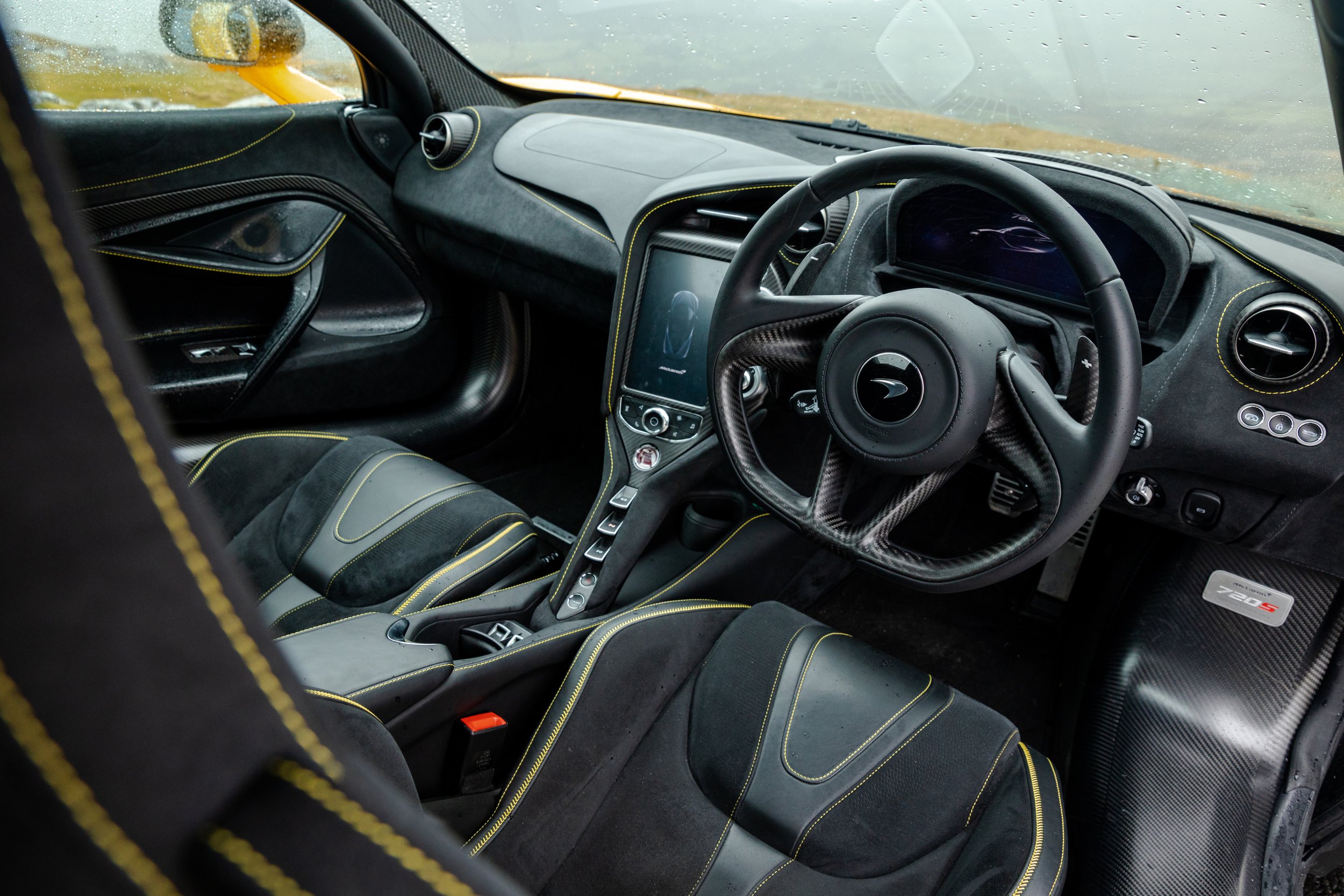
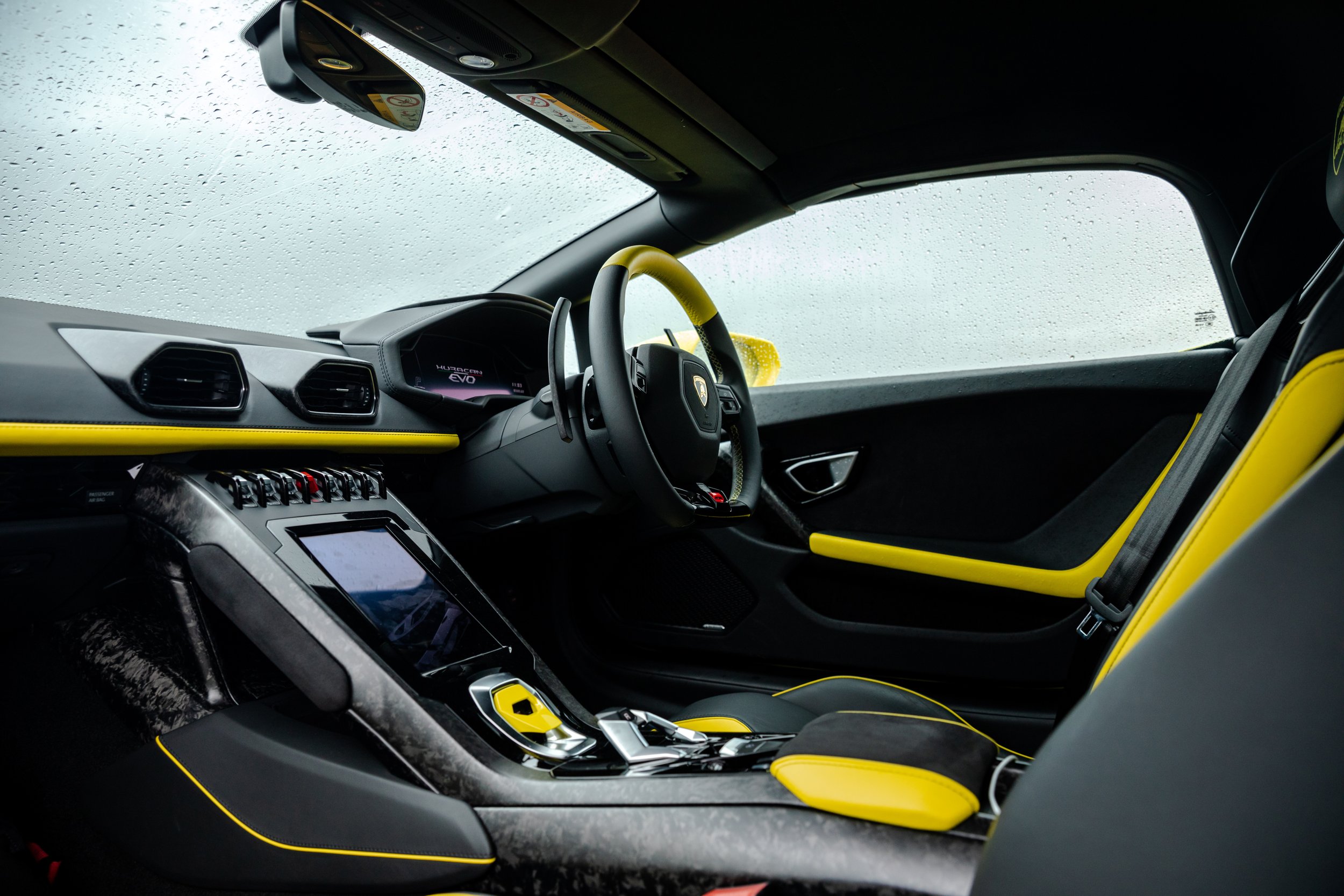
We swap cars and make our way back up the mountain. The McLaren disappears in to the distance and I’m left riding an angry bull like the cowboys you see in the movies. It’s wild, but damn it’s exciting. The Huracán charges and bucks, engine screaming and rear wheels kicking as if it’s hellbent on throwing me out the saddle. I’ll admit to breaking a sweat. I tentatively squeeze the throttle and short shift in to the next gear, it’s the only way to contain the fury. But I also realise I’m having the time of my life as I attempt to tame the beast. That sense of reward is lost in most modern cars, and for all the McLaren’s delicacy and driver focus, you never feel particularly challenged by it. If you’re after adrenalin hits, then the rear-wheel drive Huracán is the way to go.
But that’s not to say the 720S can’t be exciting. When the roads are dry and straight, the performance you’re able to unlock is as awe inspiring as the noise the Huracán makes. They’re both very fast machines, but the Mac belongs in a different league of speed. You could say it’s hypercar fast. When you hook it all up, it teleports you down the road as if you’ve bent the very fabric of space. And it’s all boost. If you get caught in a higher gear, you’ll be left waiting for the turbos to spool, but once you’ve pushed through the lag, they slingshot you towards the horizon. Some stats: 710bhp and 568 lb ft. push along a kerbweight of 1,468kg from rest to 62mph in 2.8 seconds. 124mph is completed in just 7.8 seconds and flat out, it will hit 212mph. Believe me when I tell you, nothing quite prepares you for the sheer speed of it.
The way the Lambo makes its performance is entirely different but is for many, more satisfying. The V10 motor is one that needs working to extract the best from with 603bhp at 8,000rpm and 413lb ft. at 6,500rpm. No wonder Sid was always pulling for a lower gear. On paper, it’s monstered by the McLaren with a 0-62mph sprint of 3.5 seconds and a top speed of 201mph. The RWD Spyder is actually the slowest Huracán in the model range, but that doesn’t make it any less rewarding. The throttle response is pin sharp and the power delivery is beautifully linear with one of the best soundtracks in the motor industry as a backdrop. You just bleed the throttle in and wait for the engine to crescendo as it meets the limiter, speed progressively building as you wind your way through the rev range. In years to come when we look back on the internal combustion engine, we’ll undoubtedly miss the McLaren’s V8, but the V10 in the Lamborghini will be the arrangement of cylinders we yearn to hear one last time. Simply put, it’s up there with the greatest engines ever made.
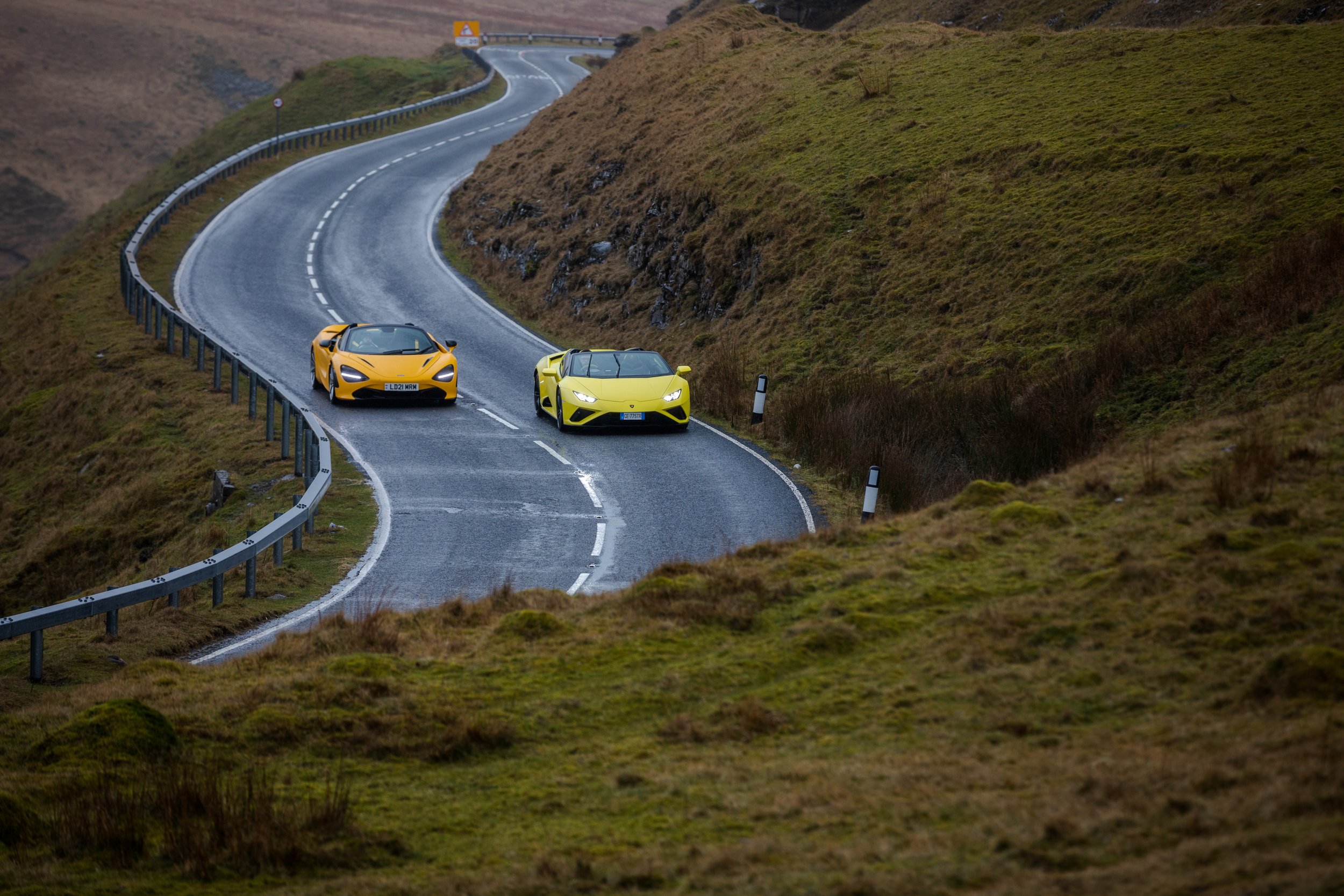
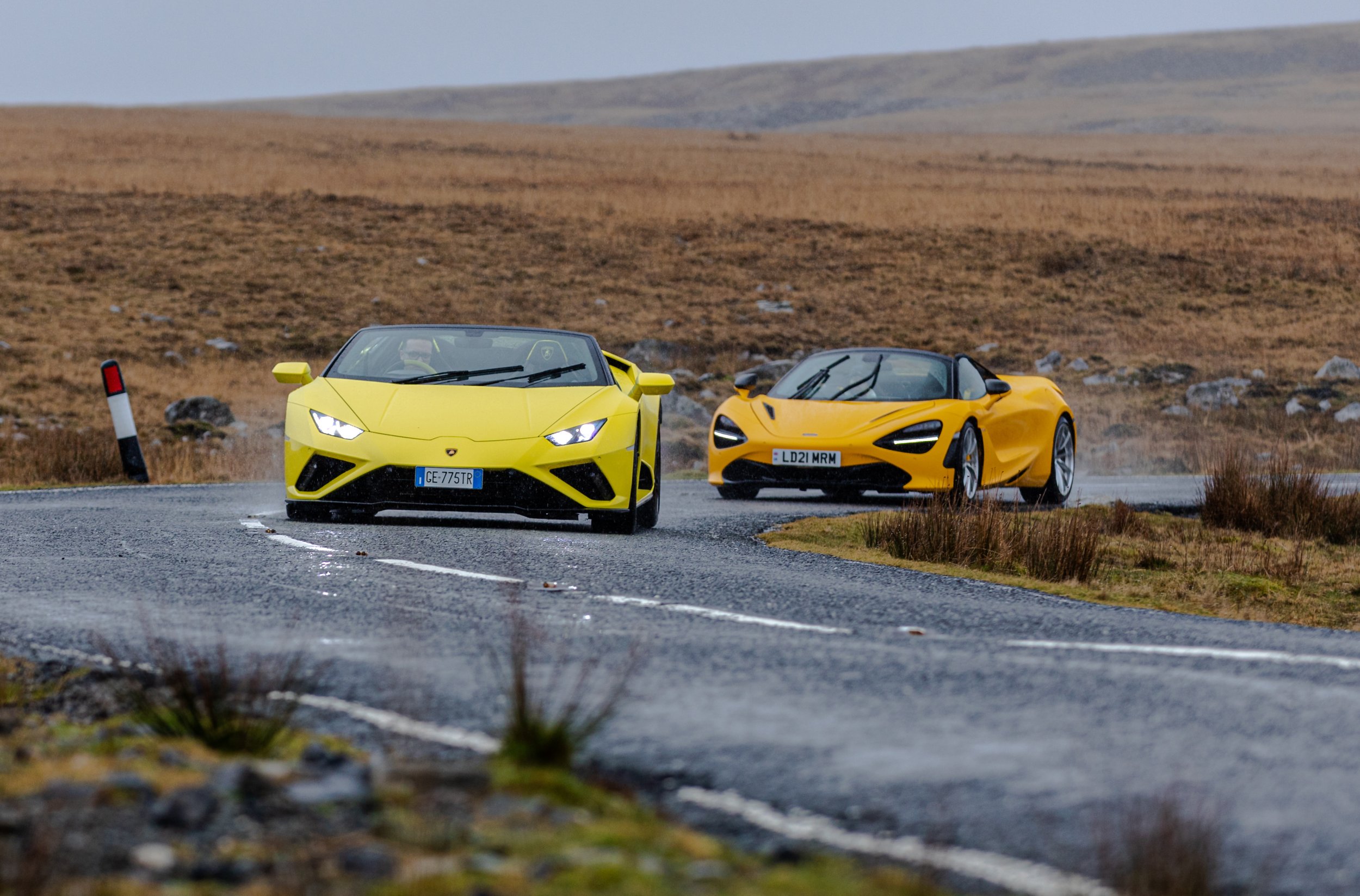
While on the subject of theatre, there were some other, let’s call them nuances, which contributed to the Lamborghini’s charm. The carbon ceramic brake discs were a touch grabby, particularly when cold, and when you left the seven-speed dual clutch gearbox in auto, it would refuse to kickdown from sixth gear which meant you had no other option than to use the paddles. In contrast, the McLaren’s carbon ceramic brakes were wonderfully progressive and the seamless shift gearbox – also a seven speeder – was the most responsive of the two transmissions. However, the Huracán does steal points back by mounting the paddles to the steering column, also, choosing your preferred driving mode simply requires the push of a button. In the 720S, the gearbox paddles move with the wheel and to change driving modes, you have to switch on an entire control panel and then individually adjust your powertrain and suspension. Options are always welcome, but it can be a bit of a faff when you just want to plug and play. You could also argue that the McLaren is a touch clinical. Others have suggested that they lack personality which is something I would argue against, but it certainly doesn’t have the drama of the Lamborghini. The Huracán RWD will also skid on demand whereas the 720S requires some bullying to get it rotated. Useless information, I know, but these things count when comparing supercars.
As the weather set in and the light faded, we had no other option than to call it a day. We left feeling suitably challenged, and the conditions in which we road tested the McLaren and Lamborghini only exposed how vastly different they are from one another. The roads, rain and low temperatures only exaggerated how much of a handful the rear-wheel drive Huracán is, but it was by far the most exciting car of the two and in the dry it’s far better behaved. The McLaren displayed how unshakably confidence inspiring it is, even when mother nature wanted to do nothing more than slow our progress. But this test was never about winners and losers. It was about living out boyhood dreams, and our pilgrimage to the Black Mountain Pass was a celebration of the supercars that took us there.
Let’s be clear, neither car was better than the other. Sid and I had lengthy conversations over which we preferred but not once did we ever argue over who had the keys to what. We adored them both, but ultimately opinions were split on which we would rather take home. He revelled in the extroverted Lamborghini and its larger than life personality, but the driver focus and outright speed of the McLaren spoke to how I enjoy driving. It was a close run decision and we both admitted that we could have easily picked either car. They are two cars for two different customers, and for that reason, the real winners are the people who are fortunate enough to have the choice over which one they would rather purchase. But we didn’t go all the way to the Black Mountains just to tell you that, we went on our trip so we could convey how special these machines are, and let me tell you, they’re everything you want them to be and more. They’re two intoxicating, life affirming, breathtaking supercars. They are what dreams are made of and we have to cherish them for as long as we can, because with the way the motor industry is heading, this might just be as good as it ever gets.
Tech Specs - Lamborghini Huracán Evo RWD Spyder
Engine: V10, naturally aspirated
Displacement: 5,204cc
Power: 603bhp @ 8,000rpm
Torque: 413lb ft @ 6,500rpm
Transmission: 7-speed twin-clutch, RWD
0-62mph: 3.5 secs
VMAX: 201mph
Kerbweight: 1,509kg
Price: £181,320+ (when new)
Tech Specs - McLaren 720S Spider
Engine: V8, twin-turbo
Displacement: 3,994cc
Power: 710bhp @ 7,500rpm
Torque: 568lb ft @ 5,500rpm
Transmission: 7-speed twin-clutch, RWD
0-62mph: 2.8 secs
VMAX: 212mph
Kerbweight: 1,468kg
Price: £245,700+ (when new)
No winners or losers here, just two fantastic supercars which cater to two different driving styles. Both of them are simply stunning in every sense of the word.
Verdict


